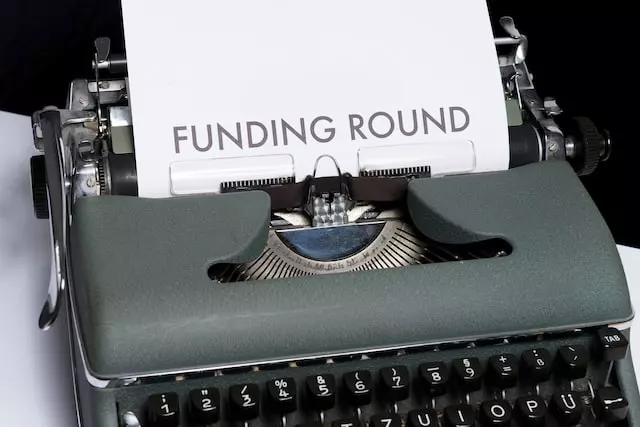As you steer your M&A deal towards its conclusion, there’s still plenty that can go wrong. You’ve done your due diligence, but now the time comes for proper cooperation as both sides take steps to implement the myriad details that go into any big deal.
This cooperation can be tricky. In fact, as many as 10% of deals fail just as they’re nearing conclusion.
It’s not yet time to relax. Now is the time for your transition team to follow a plan and make sure no important step goes unnoticed. A closing checklist will help orient you through the final stages of the deal.
M&A closing checklist example
An M&A closing checklist will vary widely according to the specific needs, details, and parties involved in different mergers and acquisitions. Checklists can be a simple listing of actions to be taken, but they can also assign clear tasks to the various parties involved with a clear timeline for the closing.
The below closing checklist example includes some of the key actions to be taken by the buying party in a company acquisition at the different closing stages
| Action | Responsible party | Stage |
| Research licensing requirements– Is the industry regulated?- What new jurisdictions will you be operating in?- Can you incorporate business licenses from the target company? | Buyer’s legal team | Pre-closing |
| Pre-clear certificates of merger– What are the conditions for pre-clearance reviews, if available? | Buyer’s legal team | Pre-closing |
| Obtain updated company charter | Buyer’s legal team | Pre-closing |
| Obtain good standing certificates– How much time before the closing should the Good Standing Certificate be issued?- How soon can you expect to have it?- Are there any annual reports and/or tax payments due between the time the certificate is issued and the time of closing your deal? | Buyer and seller’s legal teams | Pre-closing |
| Verify payment of franchise taxes– Were the correct payments made?- Do payments cover all of the jurisdiction areas where the target company operates? | External auditor | Pre-closing |
| Verify pending litigation– Does the company have any pending lawsuits or trademark disputes? | Buyer’s legal team | Pre-closing |
| Double-check business licenses– Is the documentation, procedure and timing for business licenses factored into the checklist? | Buyer’s legal team/investment bank | Pre-closing |
| File certificates of merger | Buyer’s legal team/investment bank | During closing |
| Confirm wire transfer instructions | Investment bank | During closing |
| Make sure public record information is accurate– Update name in all existing jurisdictions- Register/withdraw based on where the acquired company will be acting | Buyer’s legal team | During closing |
| Identify and track recurring requirements:- Renewals of business name and licenses- Annual or other reports | Buyer’s legal team | Post-closing |
| Annual and periodic reports | External auditor | Post-closing |
| Review books and records, including:– Minute books- Stock ledgers- Company seal | External auditor | Post-closing |
What is a closing checklist for M&A transactions?
An M&A closing checklist is a comprehensive document outlining the specific tasks and actions required to finalize the acquisition of a target company. It serves as a roadmap for both buyer and seller, ensuring all essential steps are completed in a timely and organized manner.
The checklist also helps identify and address potential roadblocks or issues that may arise as you conclude the deal.
Any M&A closing checklist has three general purposes.
1. Facilitate organization. Your checklist should aim to help integrate both the acquiring and acquired companies’ branches: accounting, HR, operations and sales, marketing, and so on.
2. Minimize risks. There’s always the unexpected. But by carefully setting out all of the documents to be reviewed and signed by both parties, you reduce the chance of an unpleasant last-minute bummer
3. Ensure compliance. As a recent Berkeley Research Group report indicates, legal disputes resulting from M&A activity have been rising, driven by a combination of macro trends and a changing deal environment. A closing checklist should make sure important closing documents are signed, and common sticking points related to tax, employee compensation, and so on are addressed beforehand.
How to prepare a closing checklist?
Your closing checklist should clearly identify what is to be done and who is to do it.
This means putting together a list of all the parties involved and their responsibilities, including closing documents procured, signed, reviewed, and delivered before the closing date.
Let’s take a look at a few best practices for your closing checklist.
1. Bring legal and financial experts on board early on
Yes, it’s obvious, but it gets overlooked. There are experts that can guide you with drafting a comprehensive closing checklist and make sure nothing gets left behind. So involve third parties such as practical law corporate attorneys, financial advisers, and investment banks to help draft.
2. Clearly define the parties involved and their duties
Identify all parties involved in your M&A transaction and clearly define their roles and responsibilities in the closing process. The main parties typically include:
a. Buyer. The acquiring company — you, obviously. The buyer shoulders most of the responsibility for conducting due diligence, securing financing, and preparing/submitting the necessary closing documents.
b. Seller. The company being acquired, whose chief duty is to cooperate in providing information requested by the buyer during the due diligence process and assist in transferring assets during the actual closing.
c. Legal teams. Those can be your in-house attorneys, or, more often, a practical law firm specializing in M&A that will draft documents such as the purchase agreement and assist with determining the closing conditions as the parties sign the deal.
d. Financial advisors. Investment banks specialize in large capital transactions such as M&A, are your typical go to. They will help you establish everything from the purchase price (helping you value your business) to drafting your overall M&A strategy, managing stock certificates, and even looking into details such as determining whether closing payments are to be made through ACH or wire transfer, and so on.
e. External third parties. Most transactions may also require bringing in outside parties, such as certified accountants, appraisers, or environmental experts and auditors, in those cases where third-party consents are called for.
3. Assign due diligence duties to your team
Depending on the scale of the transaction, you’ll want to assign a head of integration for each of your main company branches — marketing, HR, legal, and so on. This could be the assistant manager for each area, so as to avoid interfering with your company’s non-M&A-related, everyday activities.
You may also want to appoint a general M&A manager. That could be you, of course, but it’s good to have someone available full-time to investigate the acquired company’s good standing, oversee the closing conditions, review signature pages, making sure that conditions precedent are satisfied, and planning the post closing integration.
4. Establish a clear, but realistic timeline for the closing
As the closing date approaches, assign a deadline to each line item in your task checklist. These needn’t be straitjackets, but having clear dates associated with tasks will go a long way toward keeping all parties on track.
When drafting your timeline, you may want to consult different parties, including the buyer, for an accurate estimate of how long the deal should take. Keep in mind that the average time to finalize an M&A deal after the signing of the letter of intent has risen — a recent Gartner report pointed to a 38-day timetable even for mid-size deals, but deals can take significantly more time based on scale, complexity, and industry.
5. Draft your conditions precedent
Enlist the services of your legal team and investment bank to determine the key part of your closing contract — the conditions precedent, which govern the necessary actions to be fulfilled before the contract is considered valid.
Conditions precedent may include third parties and stakeholders, such as a company’s shareholders or external government auditors.
6. Draft and review other closing documents
Draft the closing documents, including the purchase agreement, transition service agreements, employment contracts, consent and approval contracts, NDAs, non-competition clauses, and any other relevant documents.
Needless to say, it’s vital to have these documents be reviewed by multiple parties to ensure accuracy, completeness, and compliance.
7. Escrow arrangements and payment
Agree on the terms and arrangements for the payment of the purchase price. This will often entail the opening of an escrow account to secure a portion of the funds until the deal signing goes through.
Although keeping a portion or the totality of the purchase funds in escrow is not always required by the seller, it may be a required condition in cases where there is a perceived risk to the buyer’s future profits or bottom line.
What to avoid during the closing process?
The closing process doesn’t just determine whether or not your deal comes to completion — it also sets you up for success or failure. And, seeing as up to 60% of large M&A deals fail to generate value, it’s easy to gauge the importance of the several weeks or months before the deal closes.
With that in mind, look out for the following pitfalls:
- Miscommunication. It’s only too easy to take things for granted or forget about important details that will later come back to bite you. Make sure all parties involved are engaging often and putting everything on the table from early on.
- Neglecting customers. When gears shift to getting an M&A deal concluded, clients’ priorities often get imperceptibly set aside. This can cause attrition and even lead to the loss of key customers — as shown in this PwC study, 20% of consumers reported negative experiences with a company going through M&A, with many stopping business with them altogether.
- Losing your bargaining power. Signing a letter of intent should not be a final step. Yet, for all effects and purposes, many companies take it as an irreversible step. Beware the sunk costs fallacy and other psychological traps that can commit you to a bad deal.
What happens after signing a closing deal?
The purchase agreement is signed, the bill of sale is ready. Escrow funds get transferred, and the deal is finalized. You may think the hard work is behind you, but in fact it’s just starting. Now comes the bulk of the integration — ensuring processes fall into place, absorbing departments, and generating that hard-sought synergy.
Set up an event for both companies’ employees to meet, talk to key customers, schedule meetings with other valuable stakeholders. And then take it from there.
Key takeaways
Closing a deal can be a stressful, overworked, rushed time. M&A deals themselves, while holding out the prospects for immense value generation, are no easy task to achieve. The path is fraught with risks.
It’s a big, effort- and time-consuming work. But all the strife can be greatly minimized, and the risks considerably diminished, if you go about things in an orderly manner, weigh the value of communication in gold, and help bring players together for maximum cooperation.
A closing checklist will help you do just that.



